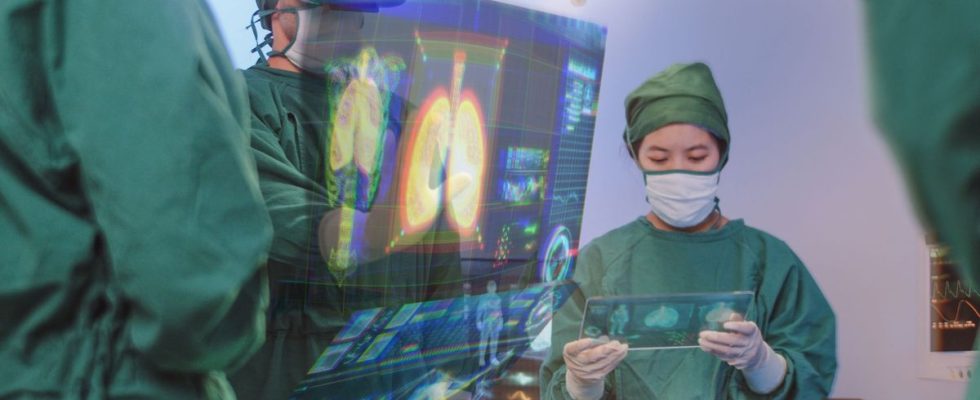Published on
Updated
Reading 3 mins.
France intends to take a head start in the race for artificial intelligence in the service of cancer diagnosis. The tool could in the future allow doctors to better adapt treatments at an earlier stage of the disease.
Among the little known or unknown medical specialties: anatomopathology. However, the “anapath” play a key role by analyzing organs, tissues or cells, to identify and analyze abnormalities linked to a disease. Their mission is particularly crucial in determining the diagnosis of cancer and the treatments to be considered.
Cancer and artificial intelligence
These doctors could soon count on the precious reinforcement of artificial intelligence (AI). While the majority of pathologists continue to use the microscope exclusively to study glass slides from biopsies, the use of digital technology is progressing.
However, once digitized, this data constitutes raw material that can be interpreted via AI algorithms and mathematical models.
“The slides contain a lot of information about the cells, which is not all decipherable by the human eye”, explains Fabrice André, director of research at the Gustave-Roussy Institute, an anti-cancer center south of Paris.
“By reading an image, a doctor cannot predict if a cell will be more or less sensitive to a treatment, if there is a risk of mutation… Whereas AI, yes”, he continues.
Four years ago, a study conducted by Gustave-Roussy and Owkin, a Franco-American startup specializing in artificial intelligence applied to medicine, showed that AI could designate, among patients with localized breast cancer , the women most at risk of metastatic relapse within five years.
On the strength of these results, the anti-cancer center and the start-up that has become a unicorn thanks to the support of the pharmaceutical giant Sanofi, are launching a consortium (“PortrAIt”) on Friday, which aims to make France “a world leader” in the use of AI to diagnose and treat cancers.
“We will always need an ‘anapath'”
The consortium, which includes the Léon Bérard anti-cancer center (in Lyon), the federation of anti-cancer centers Unicancer, the French digital imaging company Tribun Health and the private digital pathology group Cypath, intends to deploy 15 new diagnostic tools. IA within five years. It has a budget of 33 million and is supported by the State via the Public Investment Bank (BPI).
The actors of the project hope that these tools will be an aid to the diagnosis of cancers but will also be able to predict the risks of relapse, which will make it possible to adapt the treatments.
“We have already developed two products for breast cancer and colorectal cancer but with this consortium, the idea is to scale up”explains to AFP Meriem Sefta, head of diagnostics at Owkin.
On the side of the partner doctors, this ongoing revolution is not felt as competition but rather as complementarity. “We will always need an ‘anapath’ to sign the final report of a diagnosis and decide on a protocol with the oncologist, we will never be replaced by a machine”, assures Philippe Chalabreysse, the general manager of Cypath.
“We will have to make sure that the tests benefit everyone”
In any case, a handful of players are ready to take on the global market, as evidence of effectiveness begins to multiply.
Last December, the Institut Curie published in a review of Nature the results of a study showing how AI from the Israeli start-up Ibex Medical was able to detect several categories of breast cancer and determine the severity of tumors.
However, much research remains to be done to prove that the use of AI deserves to be generalized as a cancer detection tool. For example, is it effective in people of all ages? Does he escape the risk of overdiagnosis?
“It will be necessary to ensure that the tests benefit everyone, to reduce inequalities in care, and that this model is economically viable”, also warns Philippe Chalabreysse.
